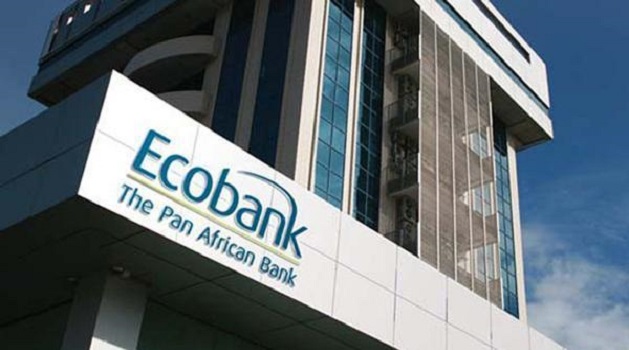General News
Preliminary Report on Associated Airline Crash Points To IT Failure

The Accident Investigation, Prevention Bureau (AIPB) has released a preliminary associated airline crash involving embraer 120 aircraft registered 5n-BJY which occurred at MMA on Thursday 3rd October, 2013while conveying home the remains of Olusegun Agagu, former Governor Ondo State for burial.
A statement endorsed by Capt. Muktar Usman, commissioner, Accident Investigation, Prevention Bureau (AIPB), reads as follows: “The following information has been determined from preliminary readout and analysis of flight 361’s flight recorders. Flight 361 was equipped with both a COCKPIT VOICE RECORDER and a FLIGHT DATA RECORDER. Both recorders were replayed at the Accident Investigation Bureau’s recently acquired flight recorder laboratory located in Abuja. International flight recorder experts from Canada who designed the laboratory assisted the investigation team with the readout and analysis process along with representatives from the aircraft manufacturer and aircraft operator, Associated Airlines. We are conducting the investigation in accordance with the provisions of International Civil Aviation Organization (ICAO) Annex 13, of which Nigeria is a member State.
“The flight data recorder or FDR contained approximately 47 hours of data in solid state memory. The recorder downloaded without issue. There were approximately 50 parameters recorded. A few parameters were not working properly however we do not think, in this particular case, that it will hamper the overall investigation.
“The cockpit voice recorder or CVR was an older generation magnetic tape based device. The CVR’s magnetic tape recording was removed from the unit and replayed on an open reel 4 track tape deck specially adapted for replaying CVR’s of this type. The CVR contained 32 and one half minutes of audio which included the internal conversation of the two pilots, radio calls and the overall aural environment in the cockpit on the cockpit area microphone. The CVR was of good quality and the team is in the process of generating a complete transcript of all relevant information. The AIB plans to release the transcript as part of its final report of the accident however the actual recording is, under international protocol, sensitive and therefore privileged information and will not be released at any time.
The following represents information that has been determined from our preliminary assessment of both flight recorders:
“The crew discussed some concerns about the aircraft prior to departure but at this time we are not prepared to elaborate on those concerns as there remains a lot of work to complete on the CVR analysis in order to determine the specific nature of the crew’s concerns.
Associated 361 was cleared for take-off on runway one eight left at Lagos international airport. The wind was calm and weather is not considered a factor in this accident. Approximately 4 seconds after engine power was advanced to commence the take-off roll, the crew received an automated warning from the onboard computer voice which consisted of three chimes followed by “Take-off Flaps…Take-off Flaps”. This is a configuration warning that suggests that the flaps were not in the correct position for take-off and there is some evidence that the crew may have chosen not to use flaps for the take-off. The warning did not appear to come as any surprise to the crew and they continued normally with the take-off. This warning continues throughout the take-off roll. As we are in the process of verifying the accuracy of the flight data, we have not yet been able to confirm the actual flap setting however we expect to determine this in the fullness of time.
“It was determined from the CVR that the pilot flying was the Captain and the pilot monitoring and assisting was the First Officer.
“The ‘set power‘call was made by the Captain and the ‘power is set’ call was confirmed by the First Officer as expected in normal operations. Approximately 3 seconds after the ‘power is set’ call, the First Officer noted that the aircraft was moving slowly. Approximately 7 seconds after the ‘power is set’ call, the internal Aircraft Voice warning system could be heard stating ‘Take off Flaps, Auto Feather’. Auto feather refers to the pitch of the propeller blades. In the feather position, the propeller does not produce any thrust. The FDR contains several engine related parameters which the AIB is studying. At this time, we can state that the Right engine appears to be producing considerably less thrust than the Left engine. The left engine appeared to be working normally. The aircraft automated voice continued to repeat ‘Take-off Flaps, Auto Feather’.
The physical examination of the wreckage revealed that the right engine propeller was in the feather position and the engine fire handle was pulled/activated.
“The standard ‘eighty knots’ call was made by the First Officer. The first evidence that the crew indicated that there was a problem with the take-off roll was immediately following the ‘eighty knots’ call. The First Officer asked if the take-off should be aborted approximately 12 seconds after the ‘eighty knots’ callout. Our investigation team estimates the airspeed to be approximately 95 knots. Airspeed was one of the parameters that, while working in the cockpit, appeared not to be working on the Flight Data Recorder. We were able to estimate the speed based on the radar data that we synchronized to the FDR and CVR but it is very approximate because of this. In response to the First Officer’s question to abort, the Captain indicated that they should continue and they continued the take-off roll.
“The crew did not make a ‘V1’ call or a Vr’ call. V1 is the speed at which a decision to abort or continue a take-off is made. Vr is the speed at which it is planned to rotate the aircraft. Normally the non-flying pilot calls both the V1 and the Vr speeds. When Vr is called the flying pilot pulls back on the control column and the aircraft is rotated (pitched up) to climb away from the runway. During the rotation, the First Officer stated ‘gently’, which we believe reflects concern that the aircraft is not performing normally and therefore needs to be rotated very gently so as not to aerodynamically stall the aircraft.
“The First Officer indicated that the aircraft was not climbing and advised the Captain who was flying not to stall the aircraft. Higher climb angles can cause an aerodynamic stall. If the aircraft is not producing enough overall thrust, it is difficult or impossible to climb without the risk of an aerodynamic stall.
“Immediately after lift-off, the aircraft slowly veered off the runway heading to the right and was not climbing properly. This aircraft behavior appears to have resulted in the Air Traffic Controller asking Flight 361 if operation was normal. Flight 361 never responded.
“Less than 10 seconds after rotation of the aircraft to climb away from the runway, the stall warning sounded in the cockpit and continued to the end of the recording. The flight data shows characteristics consistent with an aerodynamic stall.
“31 seconds after the stall warning was heard, the aircraft impacted the ground in a nose down near 90 degree right bank.
The investigation is focussing on the following:
1) Mechanical and electronic engine control issues related to the Right engine and Right engine propeller systems.
2) Aural warnings related to auto-feather and the flap settings required for takeoff.
3) Take-off configuration issues with respect to flap settings.
4) Crew decision making and training with respect to proceeding with the flight despite concerns regarding the aircraft’s suitability for flight.
5) When and how the number 2 engine fire handle was pulled.
6) Standard operating procedures with respect to continuing the take-off roll despite continuous automated voice warnings of both ‘take-off flaps’ and ‘auto feather’ when there was ample time to abort the take-off.
7) The airline management’s safety culture fostered throughout the airline.
“We are in the process of developing a comprehensive computer reconstruction of the flight which will help our team understand the sequence of events and will ultimately help us communicate our findings to the aviation community and the general public.
“At this time we have no urgent safety recommendations. We will not wait for the final report to issue safety recommendations should any issue arise that we feel needs immediate attention.
General News
T2 Backs Youth Excellence as NCBC Wins Bosun Tijani Foundation Basketball Tournament

T2 has reaffirmed its commitment to youth development and excellence through sport as the NCBC basketball team, adopted by the brand, emerged champions of the Bosun Tijani Foundation Youth Basketball Tournament held at the Alake Sports Complex, Ijeja, Abeokuta.

The tournament, organised by the Bosun Tijani Foundation in collaboration with the Ogun State Government and supported by several partners including T2, brought together 12 competitive teams from across Nigeria, positioning basketball as a powerful platform for youth engagement, discipline, and opportunity.
NCBC’s championship run reflected the values T2 seeks to champion, work ethic, intelligence, teamwork, and resilience. The team recorded commanding victories over Team Vision, Warlords, and Elevate before defeating the Ilupjeu Raiders 66–52 in a gripping final.
Commenting on the adoption of the team, Seni Ogunkola, Vice President, Brands and Communication, T2 stated “NCBC embodies the qualities we believe in, exceptional work rate, intelligence on the ball, discipline, and a hunger to excel. By supporting them, T2 is investing in potential, purpose, and the next generation of leaders on and off the court.”
The climax of the event saw His Royal Highness, Oba Adedotun Gbadebo, the Alake of Egbaland, alongside Nigeria’s Minister of Communications and Digital Economy, Bosun Tijani, present the trophy to the victorious team, drawing rapturous applause from spectators. The event was also attended by the Chief of Staff to Ogun State Governor Dapo Abiodun, Mr. Lere Olayinka, and the Ogun State Commissioner for Sports, Honourable Wasiu Isiaka, underscoring strong institutional support for youth-focused initiatives.
Through its participation in the tournament, T2 continues to position itself as a brand that goes beyond sponsorship, championing platforms that unlock talent, inspire ambition, and create lasting social impact for Nigerian youth.
General News
Ecobank Guarantees Seamless Digital Banking Services Throughout the Christmas and Year-End Period

Ecobank Nigeria, a member of Africa’s leading pan-African banking group, has assured customers of uninterrupted access to banking services throughout the year-end holiday period via its secure and robust digital platforms. The Bank also urged customers to remain vigilant against fraud and scams during the festive season.

Ecobank Bank
Speaking on the development, Victor Yalokwu, Head, Products & Analytics, Consumer & Commercial Banking, Ecobank Nigeria, said the Bank’s digital channels – including the Ecobank Mobile App, Ecobank Business App, USSD *326#, Ecobank Online, OmniPlus, Omnilite, EcobankPay, RapidTransfer, Ecobank Cards, ATMs, PoS terminals, and over 35,000 Ecobank Xpress Point (Agent Banking) locations nationwide – will remain fully available to support customers throughout the yuletide and year-end holiday period.
He noted that customers will continue to enjoy a wide range of services during the period, including local and international funds transfers, bill payments and airtime top-ups, merchant payments, balance inquiries and account statements, as well as cardless cash withdrawals via ATMs.
According to Yalokwu, “Ecobank encourages customers to leverage these digital solutions for safe, fast, and efficient banking, especially during the festive season when convenience and reliability are essential.
“While physical branch operations may be subject to adjusted working hours in line with public holidays, customers can be assured that Ecobank’s digital platforms are designed to deliver uninterrupted service and enhanced security at all times.
“Ecobank remains committed to providing innovative financial solutions and exceptional customer service, and we wish all our customers a joyful festive season and a prosperous New Year.”
Yalokwu also cautioned customers to remain vigilant against fraudsters and scammers during the period. “Before you wrap up the year, tighten your security. December brings online sales, travel, and year-end distractions—this is exactly when scammers are most active. From fake festive deals to cloned merchant sites and suspicious messages, staying vigilant helps keep your money safe.”
He advised customers to shop only on trusted websites, never share their PINs, passwords, or one-time passwords (OTPs), avoid banking on public Wi-Fi networks, be cautious of urgent or emotionally charged messages, and regularly review their account activity.
General News
Woherem Proposes Pragmatic Roadmap to End Terrorism and Banditry in Nigeria

Dr. Evans Woherem, an award-winning African technology researcher, analyst, and writer, has proposed a comprehensive and implementable strategy to end terrorism, banditry, and criminal violence in Nigeria, warning that the country’s prolonged insecurity has reached a critical point that demands urgent, coordinated action.

Titled “A Comprehensive Strategy for Ending Terrorism, Banditry, and Criminal Violence in Nigeria: A Pragmatic, Multi-Layered, and Implementable Framework,” the paper presents a holistic roadmap designed to reverse more than a decade of escalating violence that has claimed thousands of lives, displaced communities, weakened local economies, and eroded public trust in governance.
According to him, insecurity has become deeply entrenched in everyday life across the country. “Terrorism, banditry, and criminal violence have become so commonplace that they now dominate daily conversations among Nigerians,” Dr. Woherem noted, adding that while the crisis is most acute in the North-East, North-West, and North-Central regions, “its effects are now being felt even in the southern parts of the country.”
Citing the 2025 Global Terrorism Index, which ranks Nigeria sixth globally in terms of terrorism impact, Dr. Woherem described the ranking as “a sobering statistical confirmation that terrorism still weighs heavily on the Nigerian state.”
The paper traces the roots of the crisis to the emergence of Boko Haram in 2009 and the subsequent rise of splinter groups such as ISWAP. It recalls high-profile incidents including the 2014 abduction of schoolgirls in Chibok, the Dapchi and Kankara kidnappings, and a series of mass abductions and attacks on schools and places of worship recorded in 2025.
Dr. Woherem observed that banditry, largely driven by ransom payments, “has spread across the entire nation, creating fear, weakening productivity, and pushing millions of households deeper into poverty.”
While acknowledging the role of military action, the author cautioned against relying on force alone. “Nigeria cannot defeat insurgency and violent crime through arms and ammunition alone,” he said. “Any sustainable solution must confront the internal conditions that allow insecurity to thrive.”
Among the key drivers identified in the paper by Dr. Woherem, are porous borders, arms proliferation, youth unemployment, economic stagnation, and persistent conflicts over land and resources, challenges Dr. Woherem stressed can be addressed through “a deliberate, intelligence-led, and whole-of-society approach.”
At the heart of the proposed framework, Woherem noted, is a call for intelligence-driven security operations, including the establishment of a National Counter-Insurgency and Intelligence Fusion Centre. “Security operations must be guided by accurate, actionable intelligence rather than fear-led mass actions that often harm civilians and undermine public trust,” he stated.
The paper also advocates comprehensive policing reforms, including the creation of constitutionally backed state police systems supported by a more specialized federal police structure. “Nigeria’s over-centralised policing model is structurally incapable of effectively addressing widespread criminality across such a vast and diverse country.”
Recognising the realities at the grassroots, Woherem calls for the formal regulation of community-based security groups, and noted that “ignoring vigilante groups is dangerous, and banning them outright is unrealistic,” but stressed that their roles must be clearly defined, regulated, and subject to strict oversight.
On border security, particularly in the Lake Chad Basin, the author warned that instability in neighbouring countries continues to fuel Nigeria’s insecurity. “No permanent solution is possible without deep regional cooperation,” he said, advocating an Integrated Border Management system supported by joint operations with neighbouring states.
The paper places strong emphasis on prevention through economic inclusion, youth employment, and skills development. “Jobs and income remain the most powerful tools for preventing recruitment into violent groups,” Dr. Woherem asserted, adding that immediate livelihood opportunities significantly weaken the appeal of extremist narratives.
He also called for structured deradicalisation and reintegration programmes, noting that “a humane, community-accepted process is essential for breaking cycles of violence and preventing relapse into extremism.”
Dr. Woherem further emphasised the need for governance reforms and accountability in the security sector. “Without transparency, oversight, and institutional integrity, even the best security strategies will fail,” he warned.
The white paper outlines a phased implementation plan from 2025 to 2030, beginning with intelligence fusion, pilot state police initiatives, community security registration, drone surveillance, and financial crackdowns on terror networks, before expanding into nationwide reforms and long-term consolidation.
Concluding, Dr. Woherem expressed cautious optimism about Nigeria’s future. “Nigeria can overcome this prolonged phase of insecurity,” he said, “but only through political will, coordinated institutions, and the active participation of society.”
He added that the proposed framework offers “a realistic pathway to restoring security, rebuilding public trust, and unlocking Nigeria’s vast human and economic potential.”

 News3 days ago
News3 days agoHow Moniepoint’s Founders, Tosin Eniolorunda and Felix Ike are Redefining African Tech and Finance

 Telecom1 day ago
Telecom1 day agoGoogle Finally Allows Users to Change Gmail Address, Keeps Data and Services Intact

 News1 day ago
News1 day agoInsomniaQ Spotlights African Creativity in Lagos

 General News1 day ago
General News1 day agoT2 Backs Youth Excellence as NCBC Wins Bosun Tijani Foundation Basketball Tournament

 E-Financial7 hours ago
E-Financial7 hours agoNigeria’s N58.18trn Budget and Rising Cost of Deficit Governance

 Telecom7 hours ago
Telecom7 hours agoNnaemeka Ani – The Architect of ‘Code and Courage’

 Telecom7 hours ago
Telecom7 hours agoMTN Nigeria Appreciates Partners, Customers at Lagos Prestige Experience




















